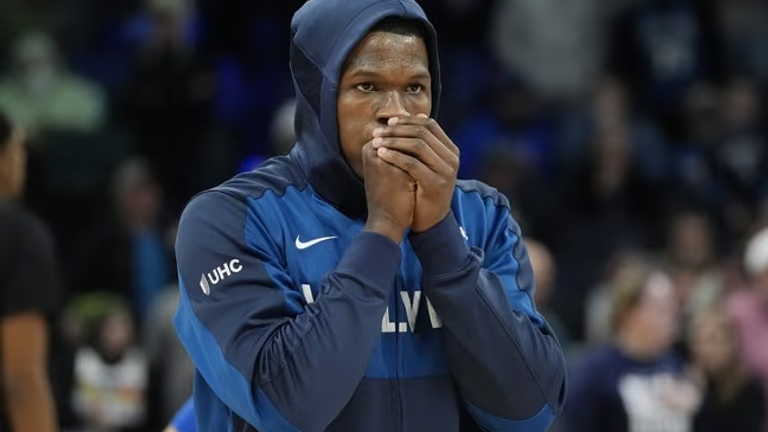As the Minnesota Timberwolves face the aftermath of another tough conference finals exit, fans and analysts alike are reflecting on a playoff journey that, despite its bittersweet end, showcased the ongoing evolution of the team’s centerpiece, Anthony Edwards.
Edwards, who took to the podium post-game with a mix of disappointment and determination, summed up his feelings perfectly: "It's exciting for me. I'm 23.
I get to do it a whole bunch of times." This statement echoes the confidence and self-assuredness that have become synonymous with Edwards’ burgeoning career.
This isn’t mere bravado—he’s backed up his belief with performance, proving himself as a top-10 player globally within just five seasons.
His impact on the Timberwolves franchise is nothing short of transformative. Once a team that struggled to make a playoff dent, the Wolves, under Edwards' leadership, have managed to thrice their series victories, taking down heavyweights like Luka Doncic, LeBron James, Nikola Jokic, and Kevin Durant along the way. Edwards has not only amplified the team's win total but has also redefined its character with his fearless play, defensive grit, and an unmistakable swagger.
While the series against the Oklahoma City Thunder may not go down as Edwards' finest, it was certainly one of the most telling. The relentless defensive attention he faced—often double-teamed by some top-tier defenders—tested his mettle.
But Edwards didn’t shy away; he embraced the challenge. Despite running low on steam by Game 5, he consistently drove at the heart of OKC’s staunch defense, maneuvering through limited spacing with deft footwork and ball-handling, keeping his composure and turnover rate impressively low.
Edwards emerged as a significant threat, particularly within the congested interior, shooting 63% from two-point range and an astonishing 74% on drives. These stats underscore an exceptionally potent inside game against a defense known for its disruption.
Throughout these playoffs, Edwards adeptly navigated various defensive schemes aimed at neutralizing him. He consistently found chinks in the armor, be it through scoring or playmaking—an area he continues to refine.
Although he didn’t always execute perfectly, his willingness to create opportunities for his teammates was evident. He upped his pass-out rate on drives to 44% in this series from lower percentages in prior playoff rounds and regular season, highlighting a growing trust in his teammates and vision on the court.
Raising his rim-attacking frequency to 35% in the postseason, against the trend of declining league-wide rim attempts in the playoffs, speaks volumes about his aggressive style. Though finishing amidst traffic remains a work-in-progress, his 55% success rate from the floater range reveals an emerging weapon in his arsenal—one that’s been a challenge for him historically.
Despite his impressive growth, Edwards’ journey is far from over. For the Timberwolves to vault beyond the conference finals, Edwards will need to enhance his playmaking skills, develop his mid-range game, and further refine his post play.
However, if his track record is any indication, these improvements are well within reach. Edwards’ drive is palpable when he asserts, "Nobody's going to work harder than me this summer."
Minnesota fans have every reason to be optimistic. Anthony Edwards seems poised to lead the Timberwolves back into the playoff fray, armed with newfound skills and a relentless work ethic, aiming not just to compete but to conquer the final hurdles standing between them and ultimate glory.


